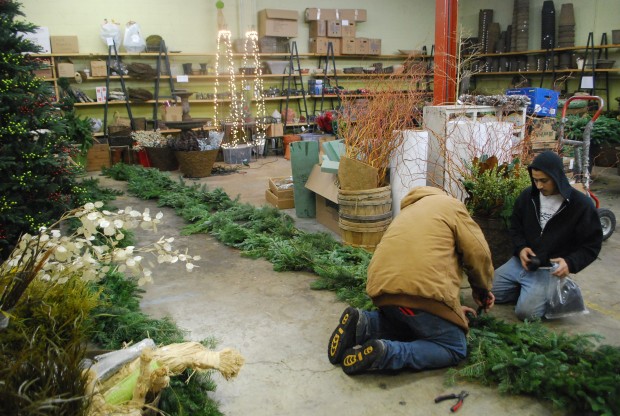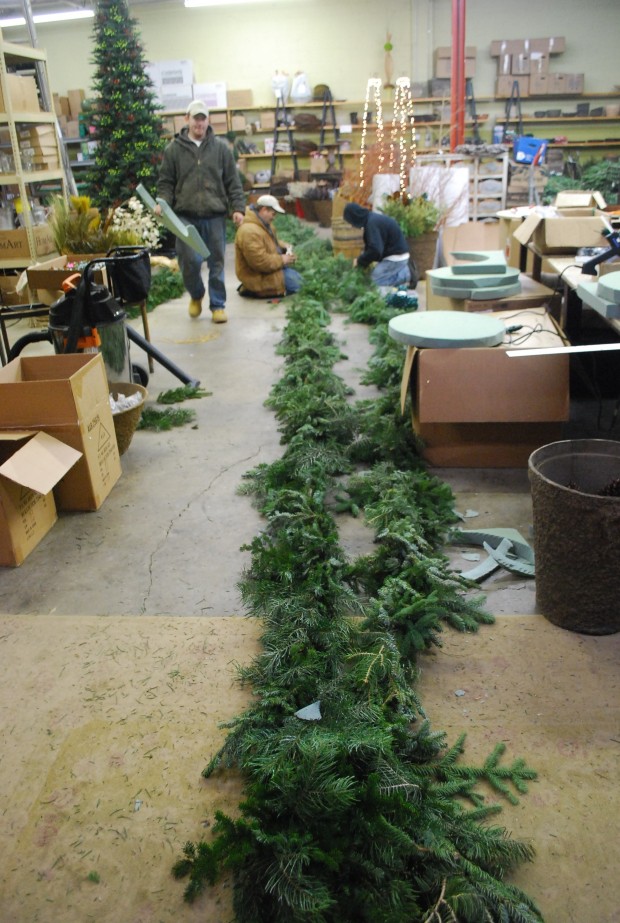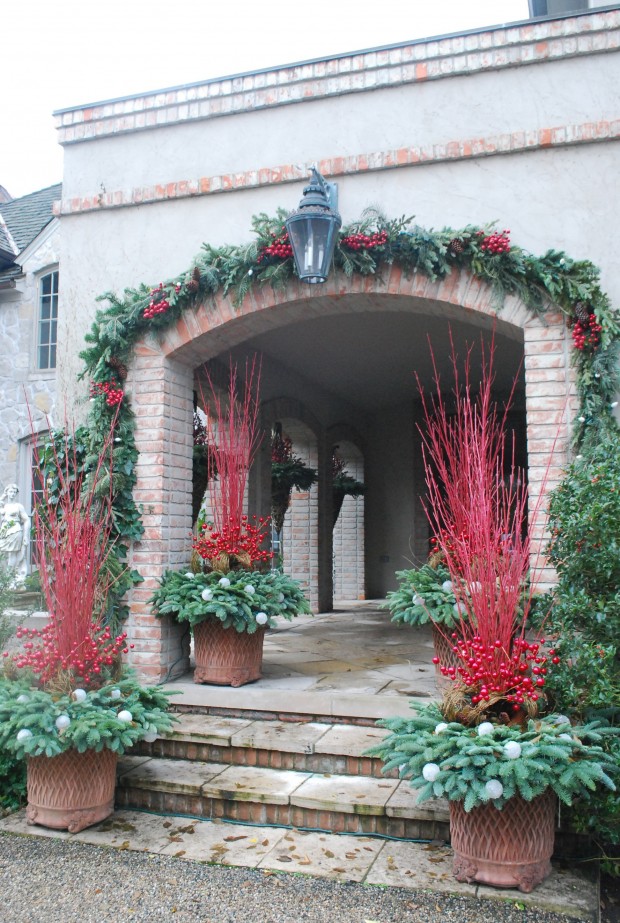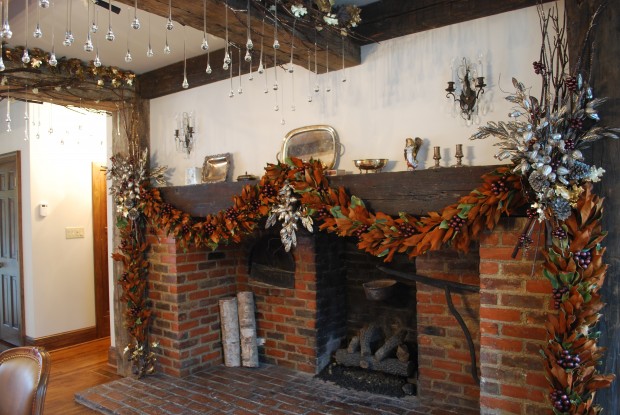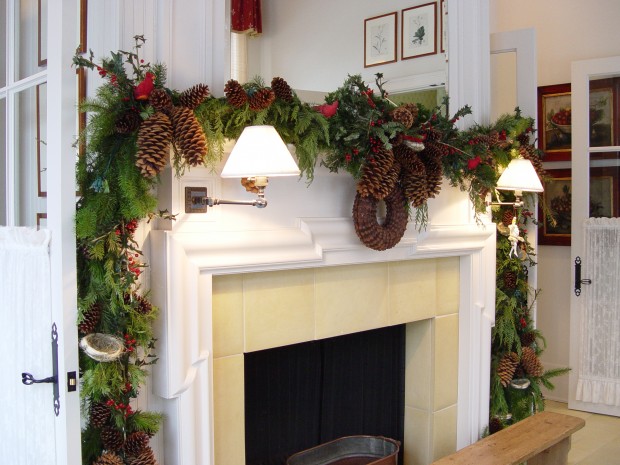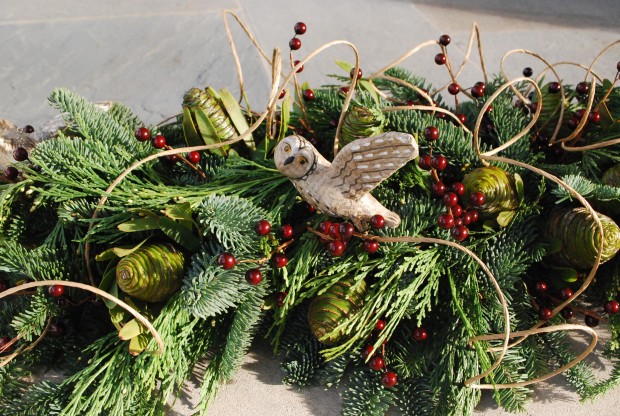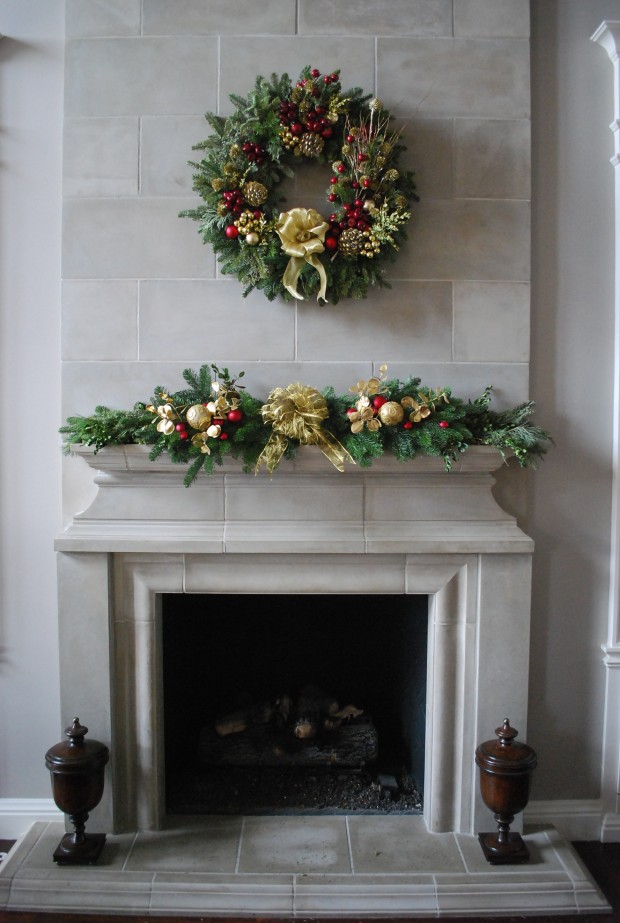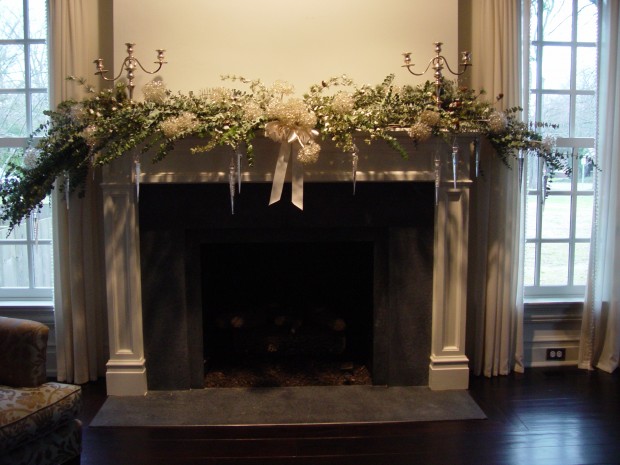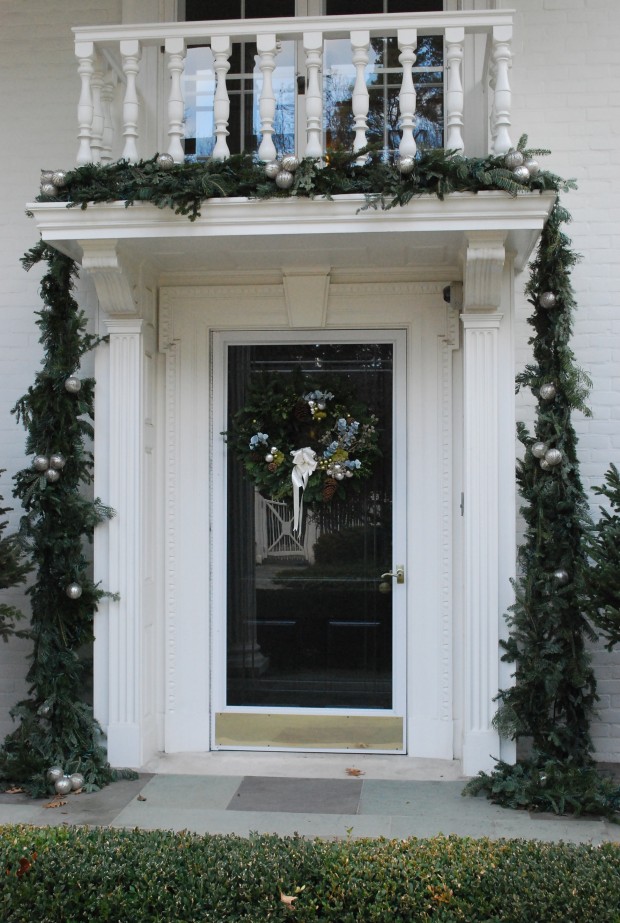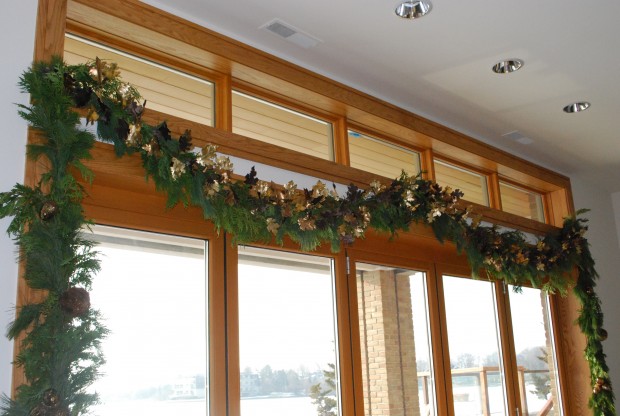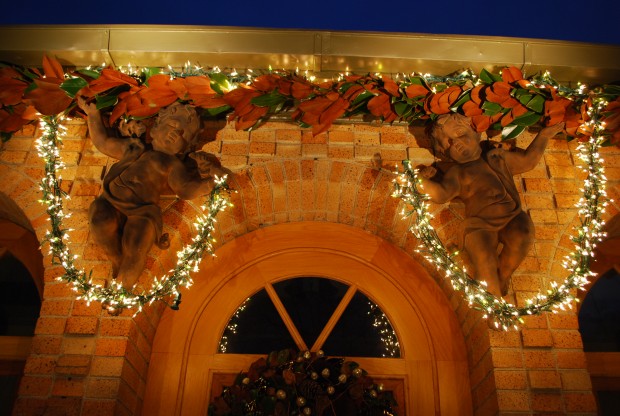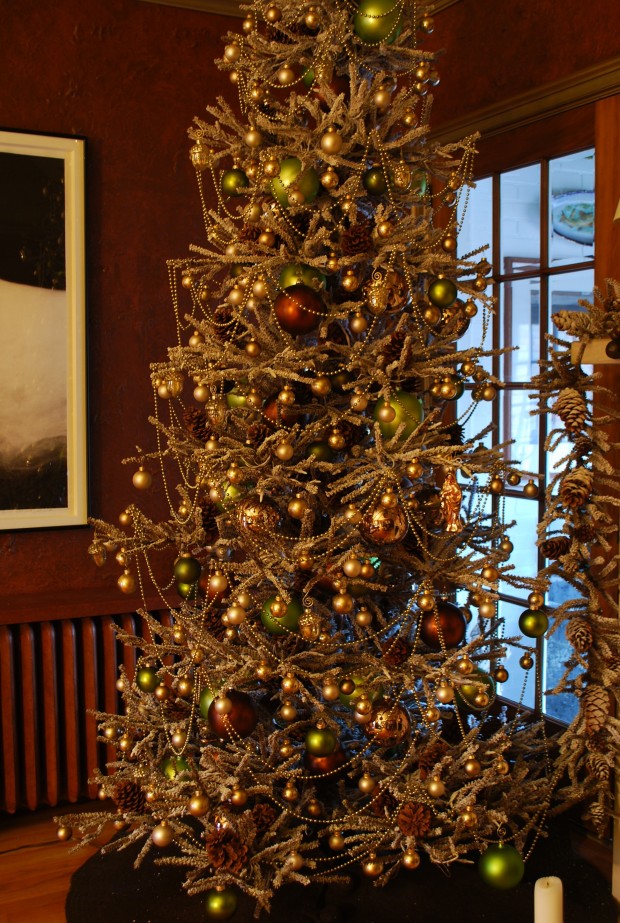A festoon is a decorative chain or strip hung between two points-this I relay to you from the dictionary. The holiday celebration provide plenty of encouragement to drape, swag, run, attach, and hang garlands-both inside and out. A garland can be a wreath-hung on a door. Or placed horizontally over the top of a birdbath. Or over the light fixtures at the front door. Or in the windows. A wreath in every window-lovely.
A length of garland, or a festoon, can be made from lots of materials, strung together. Evergreen garlands are our most popular garland. An evergreen garland is not only beautfiul to look at, it smells great. All of our garland is custom made, from three diferent types of fir. Douglas, noble and concolor fir make an evergreen garland with lots of volume.
Our garlands are triple the size of ordinary garland. I like a generous look over a door, or swagged on a gate. In places where an entrance is really large, I double over the garland, which makes it between 15-18 inches wide. Fresh garland of this size is extremely heavy-all of those branches are attached to wood from whence those green branches came.
If we need 50 feet of garland to go over an entrance or porch, we cut that garland in half, and reattach it in the center, so the branches are pointing in the same direction, whether they are on the left side, or the right side. I find a garland where the branches go up one side, and down the other visually disconcerting. All up, or all down-take your pick.
Should the branch tips face up, or down? I like all of the leaves of a magnolia garland to face up. As the leaves dry, they succumb to gravity, fall, and open up. This makes the garland wider. The leaves curl beautifully as they dry. An upfacing position will give each leaf room to make its own statement. If magnolia leaves face down, they will close even tighter as they dry-gravity will make the leaves hug the woody stems.
Evergreen garland hung with the branches facing up will have a wild, cottagy, and rustic look. The branches will fall out and down. This is a great look for a large stone fireplace, an oversized wood arbor, a wood fence of good size, or over the barn door. An evergreen garland for a more formal home might be more subtle and contained, with the branches facing down.
Many garlands are created by tieing boughs to a stout rope. Thus the word-roping. The rope is much more flexible than the boughs-eventually the greens will conform to the shape in which they are hung. A small garland designed for a dining room table might have small branches wired to make a length, as pictured above. A garland can be very short, and very striking. Or very long, and equally striking.
Garland on a mantel can be a challenge, if the mantle is very shallow. I have never been successful in convincing a clients to put brads in a mantel, so I can wire the garland to it-I have no idea why. This is why garland clips and heavy candlesticks are so popular on the mantel-they keep the garland in place. I sometimes put heavy pots on a mantel, and tuck the garland behind them. This keeps everything secure.
We do on occasion attach boughs to a stout bamboo stake, cut a foot or two shorter than the mantel. The stake keeps the entire assemblage where it belongs on a very shallow mantle. If you choose this method of construction, be sure to cut off the branchlets on the back side, so the pole can sit right next to the wall. We almost always insert extra greens into the garland after it is in place, so it looks thick and full.
To drape, or not to drape? In very formal rooms, I like the garland the width of the mantel. If the garland in a formal room drapes to the floor, how the garland pools on the floor is very important. Pooling garland on the floor like heavy taffeta drapes can be beautiful. On occasion, on a formal exterior portico, I will widen the garland at the bottom, so it pools like heavy drapes. This means adding extra branches, or an extra section of garland about half way down.
In informal rooms, I love the evergreen mantel garland to the floor. Bulky, not too controlled, and friendly. I like it loaded with other natural materials. Sugar pine cones, dried stems, eucalyptus, berries-the list of materials that can festoon your garland is long. Wired burlap ribbon, twisted and swagged, can be a beautiful companion.
Not all garlands need to be constructed from evergreens. Rob is well known for his light garland design-we make lots of them. They may look a little stilted when they are first hung-be sure you measure the lengths you are swagging-do not count on your eye. Once those light garlands come on, the heat warms the wires-when warm, they swoop beautifully.
Any material can be attached along a flexible base to make a garland. Pine cone garlands are dense and stiff. They are great in a straight run. Need them to drop? Cut them, and rewire at that spot you need them change direction. A few years ago I found tubes of platinum colored bead garlands in 30 foot lengths at English Gardens. They were beautiful on my tree-like jewelry. Gorgeous garland.
Festive-this is what garland provides to a home and a garden at the holidays. This holiday garland is quietly elegant. Just like my clients. My garland over my front door-I leave it up all winter. If the neighbors think I am eccentric, they don’t say so. It could be they like it as much as I do.

